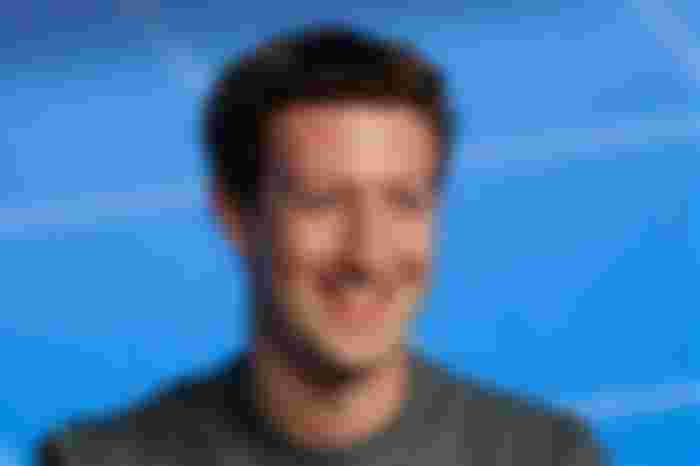
Facebook, American online social networking services. Facebook was founded in 2004 by Mark Zuckerberg, Eduardo Saverin, Dustin Moskovitz, and Chris Hughes, all of whom were students at Harvard University. Facebook became the largest social network in the world, with more than one billion users as of 2012, and about half that number were using Facebook every day. The company’s headquarters are in Menlo Park, California.
Access to Facebook is free of charge, and the company earns most of its money from advertisements on the Web site. New users can create profiles, upload photos, join a preexisting group, and start new groups. The site has many components, including Timeline, a space on each user’s profile page where users can post their content and friends can post messages; Status, which enables users to alert friends to their current location or situation; and News Feed, which informs users of changes to their friends’ profiles and status. Users can chat with each other and send each other private messages. Users can signal their approval of content on Facebook with the Like button, a feature that also appears on many other Web sites.
The attractiveness of Facebook stems in part from cofounder Zuckerberg’s insistence from the very beginning that members be transparent about who they are; users are forbidden from adopting false identities. The company’s management argued that transparency is necessary for forming personal relationships, sharing ideas and information, and building up society as a whole. It also noted that the bottom-up, peer-to-peer connectivity among Facebook users makes it easier for businesses to connect their products with consumers.
The company has a complicated early history. It began at Harvard University in 2003 as Facemash, an online service for students to judge the attractiveness of their fellow students. Because the primary developer, Zuckerberg, violated university policy in acquiring resources for the service, it was shut down after two days. Despite its mayflylike existence, 450 people (who voted 22,000 times) flocked to Facemash. That success prompted Zuckerberg to register the URL TheFacebook .com in January 2004. He then created a new social network at that address with fellow students Saverin, Moskovitz, and Hughes.
The social network TheFacebook .com launched in February 2004. Harvard students who signed up for the service could post photographs of themselves and personal information about their lives, such as their class schedules and clubs they belonged to. Its popularity increased, and soon students from other prestigious schools, such as Yale and Stanford universities, were allowed to join. By June 2004 more than 250,000 students from 34 schools had signed up, and that same year major corporations such as the Credit card company MasterCard started paying for exposure on the site.
In September 2004 TheFacebook added the Wall to a member’s online profile. This widely used feature let a user’s friends post information on their Wall and became a key element in the social aspect of the network. By the end of 2004, TheFacebook had reached one million active users. However, the company still trailed the then-leading online social network, Myspace, which boasted five million members.
The year 2005 proved to be pivotal for the company. It became simply Facebook and introduced the idea of “tagging” people in photos that were posted to the site. With tags, people identified themselves and others in images that could be seen by other Facebook friends. Facebook also allowed users to upload an unlimited number of photos. In 2005 high-school students and students at universities outside the United States were allowed to join the service. By year’s end it had six million monthly active users.
In 2006 Facebook opened its membership beyond students to anyone over the age of 13. As Zuckerberg had predicted, advertisers were able to create new and effective customer relationships. For example, that year, household product manufacturer Procter & Gamble attracted 14,000 people to a promotional effort by “expressing affinity” with a teeth-whitening product. This kind of direct consumer engagement on such a large scale had not been possible before Facebook, and more companies began using the social network for marketing and advertising.
Privacy remains an ongoing problem for Facebook. It first became a serious issue for the company in 2006, when it introduced News Feed, which consisted of every change that a user’s friends had made to their pages. After an outcry from users, Facebook swiftly Implement privacy controls in which users could control what content appeared in News Feed. In 2007 Facebook launched a short-lived service called Beacon that let members’ friends see what products they had purchased from participating companies. It failed because members felt that it encoraced on their privacy. Indeed, a survey of consumers in 2010 put Facebook in the bottom 5 percent of companies in customer satisfaction largely because of privacy concerns, and the company continues to be criticized for the complexity of its user privacy controls and for the frequent changes it makes to them.
In 2008 Facebook surpassed Myspace as the most-visited social media Web site. With the introduction of Live Feed, the company also took a competitive swing at the growing popularity of Twitter, a social network that runs a live feed of news service-like posts from members whom a user follows. Similar to Twitter’s ongoing stream of user posts, Live Feed pushed posts from friends automatically to a member’s homepage. (Live Feed has since been incorporated into News Feed.)
Facebook has become a powerful tool for political movements, beginning with the U.S. presidential election of 2008, when more than 1,000 Facebook groups were formed in support of either Democratic candidate Barack Obama or Republican candidate John McCain. In Colombia the service was used to rally hundreds of thousands in protests against the antigovernment FARC guerrilla rebellion. In Egypt, activists protesting the government of Pres. Hosni Mubarak during the uprising of 2011 often organized themselves by forming groups on Facebook.
Facebook encourages third-party software developers to use the service. In 2006 it released its application programming interface (API) so that programmers could write software that Facebook members could use directly through the service. By 2009 developers generated about $500 million in revenue for themselves through Facebook. The company also earns revenues from developers through payments for virtual or digital products sold through third-party applications. By 2011 payments from one such company, Zynga Inc., an online game developer, accounted for 12 percent of the company’s revenues.
In February 2012 Facebook filed to become a public company. Its initial public offering (IPO) in May raised $16 billion, giving it a market value of $102.4 billion. By contrast, the largest IPO of an Internet company to date was that of the search-engine company Google Inc., which had raised $1.9 billion when it went public in 2004. By the end of the first day of the stock’s trading, Zuckerberg’s holdings were estimated at more than $19 billion.
Mark Zuckerberg,
computer programmer and entrepreneur

Mark Zuckerberg, in full Mark Elliot Zuckerberg, (born May 14, 1984, White Plains, New York, U.S.), American computer programmer who was cofounder and CEO (2004 ) of Facebook, a social networking Web site.
After attending Phillips Exeter Academy, Zuckerberg enrolled at Harvard University in 2002. On February 4, 2004, he launched thefacebook.com (renamed Facebook in 2005), a directory in which fellow Harvard students entered their own information and photos into a template that he had devised. Within two weeks half of the student body had signed up. Zuckerberg’s roommates, Dustin Moskovitz and Chris Hughes, helped him add features and make the site available to other campuses across the country. Facebook quickly became popular as registered users could create profiles, upload photos and other media, and keep in touch with friends. It differed from other social networking sites, however, in its emphasis on real names (and e-mail addresses), or “trusted connections.” It also laid particular emphasis on networking, with information disseminated not only to each individual’s network of friends but also to friends of friends—what Zuckerberg called the “social graph.”
In the summer of 2004 the trio moved their headquarters to Palo Alto, California, where Zuckerberg talked venture capitalist Peter Thiel into giving them seed money. Zuckerberg dropped out of Harvard to concentrate on the fledgling company, of which he became CEO and president. In May 2005 Facebook received its first major infusion of venture capital ($12.7 million). Four months later Facebook opened to registration by high-school students. Meanwhile, foreign colleges and universities also began to sign up, and by September 2006 anyone with an e-mail address could join a regional network based on where he or she lived. About that time Zuckerberg turned down a $1 billion buyout offer from Yahoo!, but in 2007 Facebook struck a deal with Microsoft in which the software company paid $240 million for a 1.6 percent stake in Facebook; two years later Digital Sky Technologies purchased a 1.96 percent share for $200 million. In 2008 Zuckerberg’s new worth was estimated at about $1.5 billion. After Facebook’s initial public offering (IPO) of stock in 2012, Zuckerberg’s net worth was estimated at more than $19 billion.

Facebook is a awesome social media. I love this site 😍